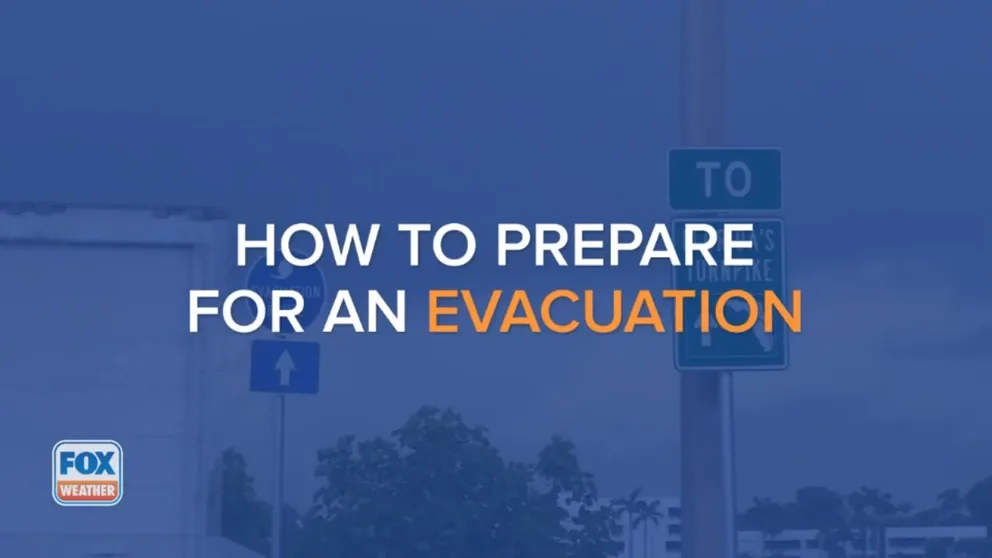How to prepare for an evacuation
Evacuations are stressful, but planning ahead can help.
How to prepare for an evacuation
In a crisis, your anxiety levels are already high. Now, add an order to leave your home and run to safety and stress levels are off the charts. Here are some tips to help you prepare for an evacuation.
In a crisis, your anxiety levels are already high. Now, add an order to leave your home and run to safety and stress levels are off the charts.
The best way to manage the uncertainty that a disaster brings is to prepare for what Mother Nature may bring. According to the Federal Emergency Management Agency, this includes not only building a kit of emergency supplies (there are tips about doing that here) but also developing an evacuation plan.
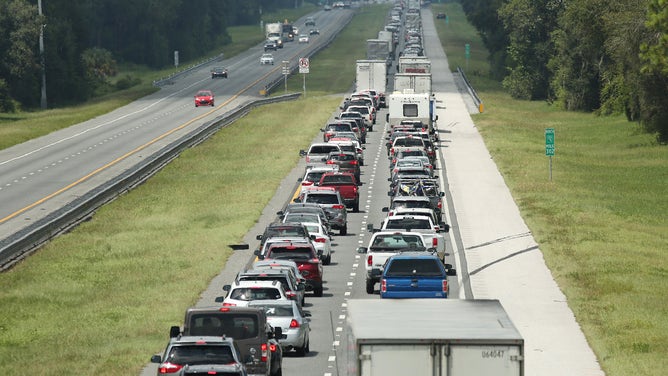
Traffic rolls at a crawl on the northbound lanes of Florida's Turnpike near the intersection of I-75 in Wildwood on Friday, September 8, 2017. Motorists are evacuating for the anticipated arrival of Hurricane Irma.
(Stephen M. Dowell/Orlando Sentinel/Tribune News Service via Getty Images) / Getty Images)
According to a 2019 FEMA report, evacuations and shelter-in-place orders have become a more important part of emergency management operations. More than 8 million people across the U.S. were affected by evacuation orders in 2017, according to the report.
The goal of an evacuation is to move as few people as need the shortest distance to safety, according to FEMA.
Here are some tips to help you prepare for an evacuation.
Who’s in charge?

Deanne Criswell, administrator of the Federal Emergency Management Agency (FEMA) speaks at Florida International University in Miami, Florida on August 1, 2022.
(Cristobal Herrera-Ulashkevich / EPA / Bloomberg / Getty Images)
Knowing who will issue an order to evacuate can go a long way in helping you prepare for such an event. It’ll give you a better understanding of which websites, social media channels or broadcast outlets you should watch during a crisis.
The tricky part is that this responsibility widely varies from place to place. According to FEMA, state, local and tribal governments take the lead on issuing evacuation orders. If you live in a city, for example, it could be the municipal government, the county government or the state government that’s in charge of evacuations.
FEMA provides links to emergency management agencies in your area at fema.gov/locations. All you have to do is provide some location information.
Know your zone
It’s critical to determine if you live in an evacuation zone. That process can also be a bit complicated since, as noted above, responsibility for planning and executing evacuations falls on different agencies for different places. There is more detailed guidance on finding your evacuation zone here.
HOW TO WATCH FOX WEATHER ON TV
Gas up
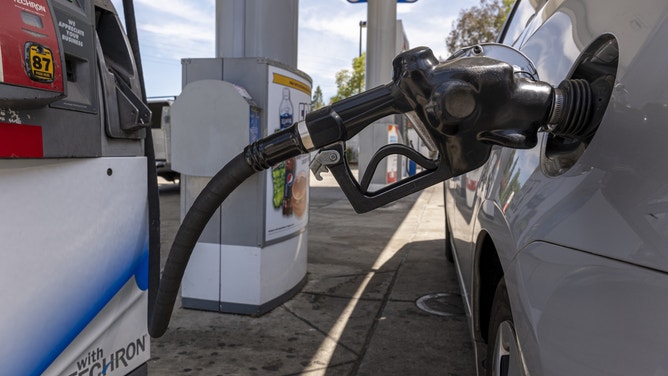
A fuel nozzle in a car at a Chevron gas station in Pinole, California, U.S., on Wednesday, June 22, 2022.
(Getty Images)
FEMA advises that you should keep a half-tank of gas in your vehicle at all times in case of an unexpected evacuation. If an evacuation seems likely, you should fill up your car’s gas tank as soon as possible.
"Gas stations may be closed during emergencies and unable to pump gas during power outages," FEMA wrote in February 2021 guidance posted at Ready.gov.
If you don’t have a vehicle, figure out how you will leave. FEMA advises you should check with family, friends or local emergency management officials to determine what transportation resources may be available.
Where are you going?
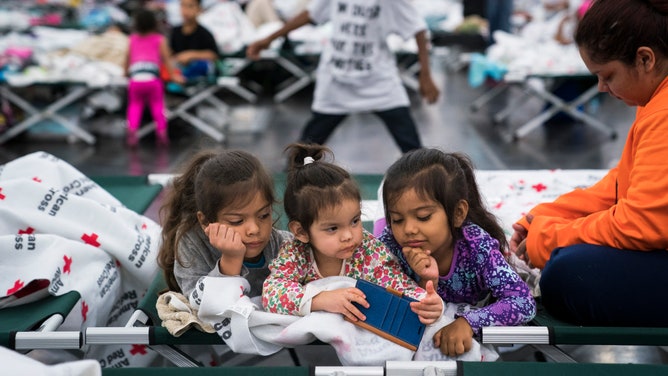
People seek shelter from Hurricane Harvey at the George R. Brown Convention Center in Houston, TX on Monday, Aug 28, 2017.
(Jabin Botsford / The Washington Post / Getty Images)
Whether it’s a shelter or a relative’s house, you’ll need to know where you’re headed in the event of an evacuation.
FEMA officials say the agency’s app will provide a list of available shelters in the event of an emergency. The emergency management agency for your area will also have a list of shelters that have been set up. Television, radio and newspapers usually publish the shelter locations once officials have released them, as well.
The key is to figure this out early so that you’re not scrambling during an emergency.
7 THINGS TO KNOW ABOUT HURRICANES
Pick a route
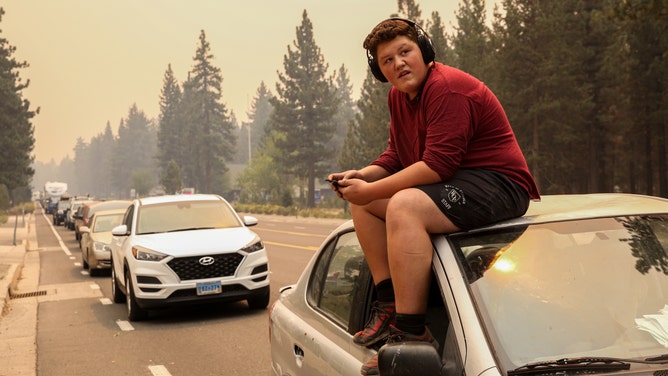
Victor Salas Jr.,15, sits on top of his car as he waits in evacuation traffic on Highway 50 out of South Lake Tahoe, Calif. on Monday, Aug. 30, 2021.
(Brontë Wittpenn / San Francisco Chronicle / Getty Images)
Once you know where you’re going, you need to figure out the route you will take to get there. The emergency management agency for your area will usually have a map of routes that can be used during an evacuation available on its website. Keep in mind that if you live in a predetermined evacuation zone, you may have a specific route assigned to your location. This helps manage the amount of traffic that is on a highway as people leave town.
In places where evacuations are more common, you can identify a designated evacuation route by looking for signs with blue circles on them. They’ll sometimes feature arrows that give you the direction of the route.
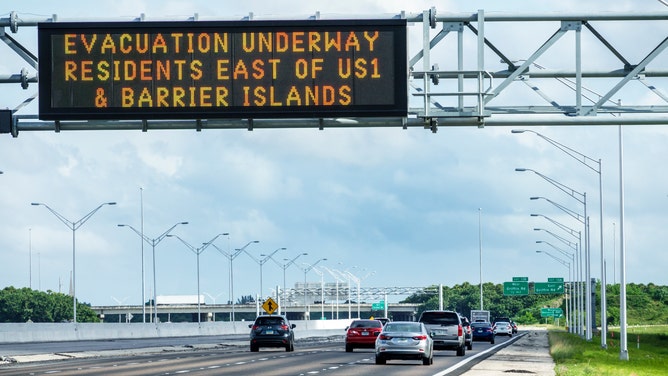
People evacuate Miami Beach as Hurricane Irma approaches in September 2017.
(Jeffrey Greenberg / Universal Images Group / Getty Images)
Coastal locations sometimes use a method called "contraflow" during a mass evacuation. This is when all lanes of a highway are being used to move traffic in one direction. This means that instead of driving on the right side of the road, you could find yourself driving on the left side. Keep an eye out for signs that indicate whether contraflow is in effect.
Bring your emergency supplies
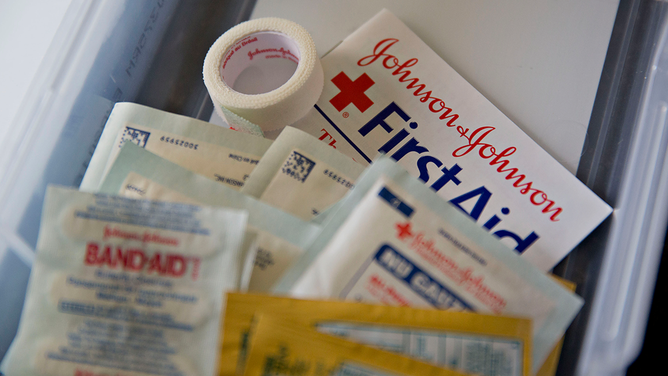
Johnson & Johnson first aid products are arranged for a photograph in Tiskilwa, Illinois, U.S., on Thursday, July 2, 2015.
(Daniel Acker / Bloomberg / Getty Images)
Don’t forget to bring along that emergency supply kit that you assembled. If you need some pointers on how to assemble an emergency kit, click here.
WHAT TO PUT IN AN EMERGENCY KIT
Plan for pets
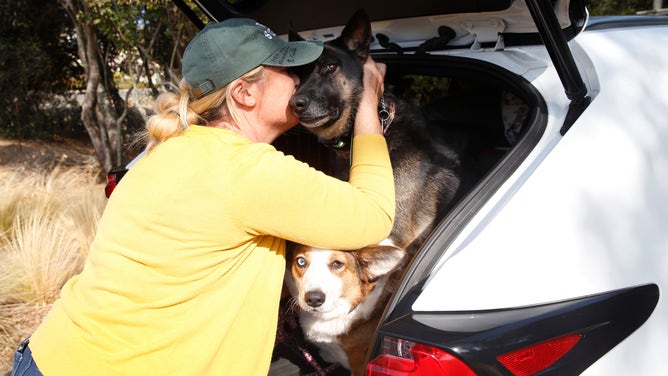
Laura Morales hugs her German shepherd Mia after loading the family pets, including Charlie the corgi, into the car as she and her family prepares to flee their home on Rosewood Drive in Healdsburg, Calif. on Saturday, Oct. 26, 2019 after authorities issued evacuation orders to 50,000 residents of Healdsburg and Windsor.
(Paul Chinn / The San Francisco Chronicle / Getty Images)
If you have pets, you’ll need to factor them in when it comes to developing your evacuation plan.
According to the Food and Drug Administration’s Center for Veterinary Medicine, you should bring your pets with you in the event of an evacuation. However, that may not be as easy as it sounds.
Shelters are required to accept service animals as long as the animal meets the requirements outlined in the Americans with Disabilities Act, according to the FDA. Most shelters do not accept non-service animals.
You can find more information about how pet owners can prepare for disasters here.
WHAT YOU SHOULD DO WITH PETS DURING A HURRICANE
Returning home
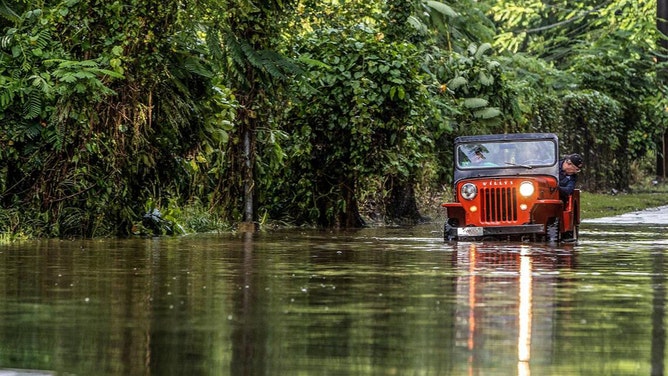
Juan Antonio Molina drives his old jeep through a road flooded in Toa Alta by Hurricane Fiona that passed by Puerto Rico on Monday Sept. 18, on Wednesday, Sept. 20, 2022.
(Pedro Portal / Miami Herald/Tribune News Service / Getty Images)
You should wait for local authorities to give the OK for people to return before you head back home.
According to FEMA, you should prepare for major disruptions to daily life if you live in a disaster area. You should fuel up and fully charge all of your devices before you hit the road. Also, restock with fresh water and food before you head home.
Once home, stay away from downed power lines. Generators should only be used outdoors and away from your home.
More
FEMA has put together an in-depth guide to evacuations at ready.gov/evacuations. It includes what you should do before, during and after an evacuation.
